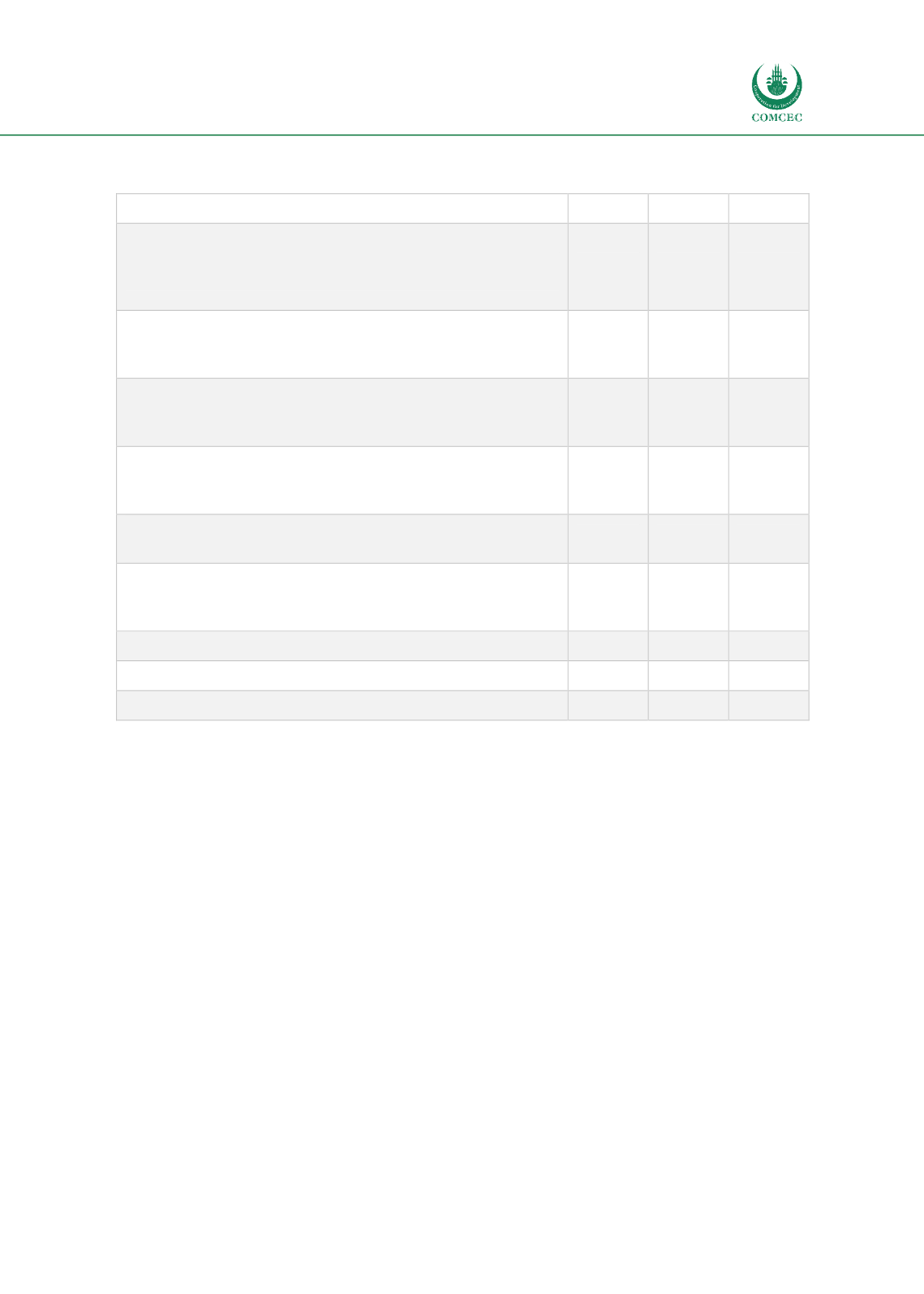

Improving Customs Transit Systems
In the Islamic Countries
113
Table 43: Border Agency Cooperation at the national level
Response
0
1
2
General cooperation and coordination of the activities of
domestic agencies involved in the management of cross
border trade, with a view to improving border control
efficiency and facilitating trade
6.70%
86.70%
6.60%
Domestic inter-agency coordination mechanisms meet
regularly to develop a strategy and oversee implementation of
border agency cooperation
33.30%
51.10%
15.60%
Domestic coordination /harmonization of data requirements
and documentary controls among agencies involved in the
management of cross border trade
53.30%
44.40%
2.20%
Interconnected or shared computer systems and real-time
availability of pertinent data among domestic agencies
involved in the management of cross border trade
80.00%
17.80%
2.20%
Domestic coordination of inspections among agencies
involved in the management of cross border trade
6.70%
86.70%
6.70%
Shared results of inspections and controls among agencies
involved in the management of cross border trade with a view
to improving border control efficiency and facilitating trade
91.10%
8.90%
Coordinated / shared risk management mechanisms
68.90%
26.70%
4.40%
Authorized Operators programs
91.10%
6.70%
2.20%
Coordinated / shared infrastructure and equipment use
46.70%
53.30%
Source: WTO TFA indicators database
3.2.5.8
Cross-Border Agency Cooperation
Only 22.2% of the OIC MS have an explicit co-ordination strategy led at a high political level, or
the concerned countries belong to a Customs Union, while 48.9% of the countries have national
legislation that allows for cross-border co-operation, co-ordination, exchange of information
and mutual assistance with border authorities in neighboring countries. Still, 28.9% of countries
don't have cross-border co-operation and co-ordination with border agencies with the
neighboring countries. In more than half of the OIC MS, working days and hours are not aligned
with neighboring countries - in 73.3% of the countries, local arrangements exist in order to
facilitate goods’ traffic. In more than half of the MS, data requirements are harmonized with
neighboring countries. In case of the risk management cooperation, in 86.7% of the MS, there is
no risk management co-operation with border agencies in neighboring countries, and only
13.3% of the MS border agencies in neighboring countries share intelligence to improve risk
management efficiency and facilitating legitimate trade. Still, there are no interagency synergies
in terms of shared risk profiling of traders or consignments, or of risk analysis and exchange of
















